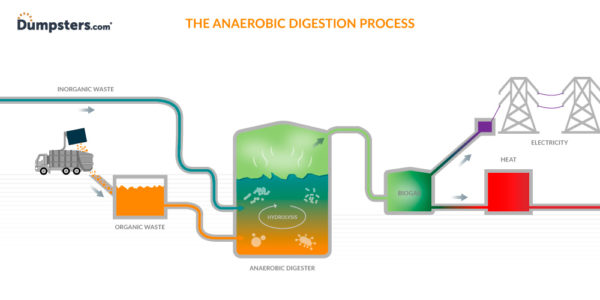That leftover pizza could power your home – so don’t throw away the crust!
Food waste is not a new issue. Many people think of ways to reduce how much food they waste and are more mindful of their grocery shopping lists. But sometimes, food must simply be thrown out.
Now, thanks to a new innovation, that food in the trash could have a second life…
Sending the trash down under

With the use of an anaerobic digester, the City of Cockburn in Perth, Australia is converting food waste into energy.
The company in charge of the process is called RichGro. It ensures that scraps of food are collected from restaurants and supermarkets, who often must throw out the most food – often unnecessarily. Once collected, the “leftovers” are taken to a nearby fertilizer plant with the digester.
They also turn the liquid waste from this process into fertilizer for farmers and compost. Amazingly, it’s generating enough methane to power about 3,000 homes. Now that’s what we call sustainable!
This different digestive process explained

Image source: Dumpsters.com
Once the food scraps are collected, they go through the “mechanical stomach” to be converted into usable energy.
First, a machine removes the packaging and other “non-food contamination.” Then it’s mixed in with water and turned into a pulp.
Once it’s all broken down, it gets fed into the digesters.
Inside the digesters, bacteria break down the waste – creating methane gas. That gas is then pushed out and run through two giant generators, which in turn produce about 2.4 megawatts of electricity. That’s enough to power the company and the surrounding homes we mentioned above.
RichGro managing director Tim Richards compared the digesters to a stomach, meaning the digestor can get sensitive to certain waste.
“Certainly, you can overdo a good thing – you wouldn’t want too much fats, oils, and greases,” Richards said. “A lot of fruit and veg, starchy, sugary products are good. They produce a lot of energy.”
Spreading green energy around the world…

So far, the city estimates it’s recycled about 43 tons of thrown-out food and saved almost 200,000 pounds of CO2 that would’ve gone into the atmosphere if it was sent to a landfill.
This project has been popular in Australia and is quickly growing around the world. It seems to be a cheap and sustainable way to create energy for communities.
But Australia isn’t the only place where these “mechanical stomachs” are popping up. There are similar plants in Europe that are expanding this process, and we hope other countries will soon start learning about an environmentally friendly way to dispose of food waste and create green energy.
Sounds great. Here in California, USA, we have a pretty big variety of bagged soil amendments available at the hardware and gardening stores like ACE Hardware and home depot. I haven’t heard of your power mode notion, but think it a good idea.